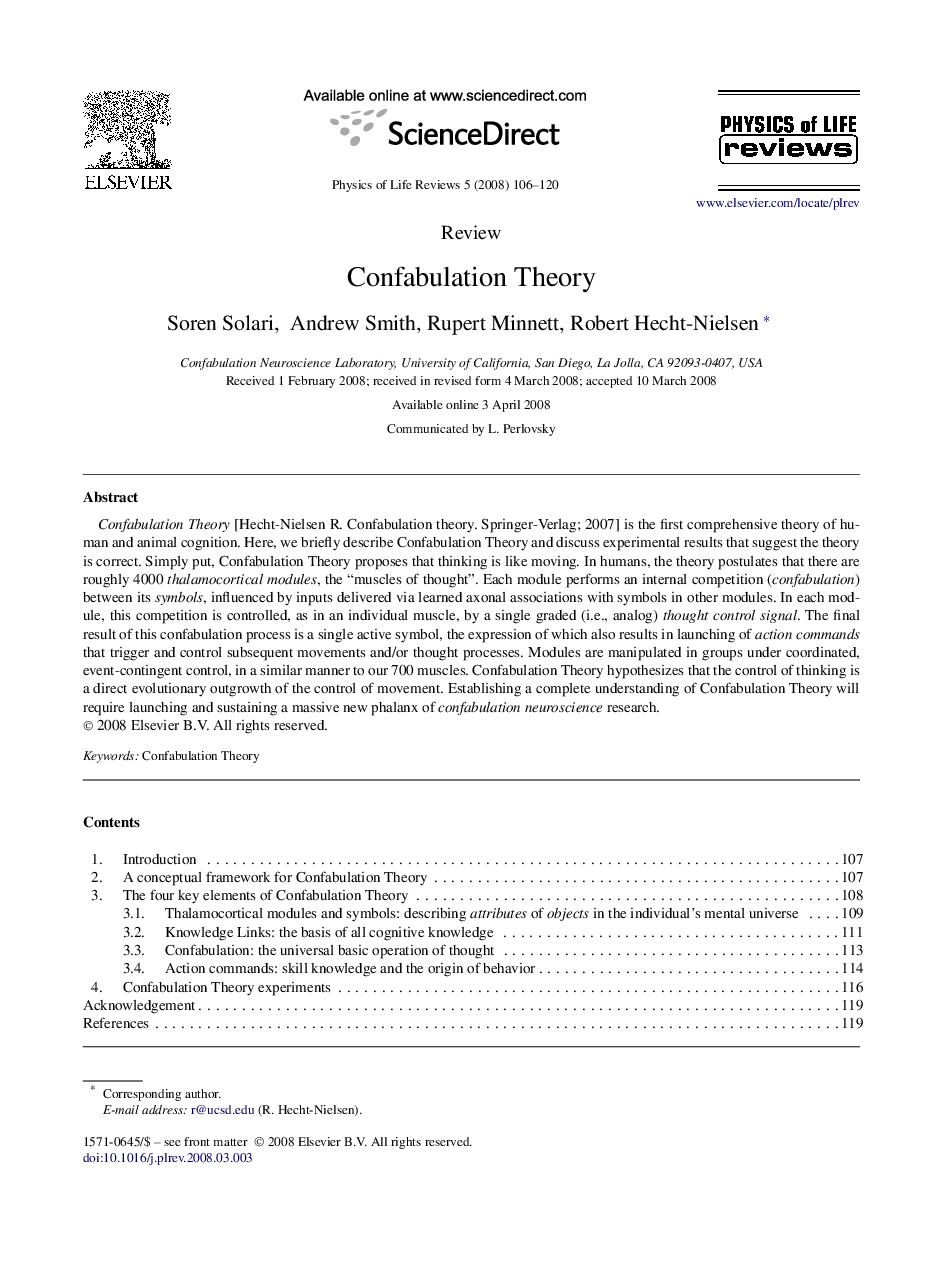| Article ID | Journal | Published Year | Pages | File Type |
|---|---|---|---|---|
| 1873060 | Physics of Life Reviews | 2008 | 15 Pages |
Abstract
Confabulation Theory [Hecht-Nielsen R. Confabulation theory. Springer-Verlag; 2007] is the first comprehensive theory of human and animal cognition. Here, we briefly describe Confabulation Theory and discuss experimental results that suggest the theory is correct. Simply put, Confabulation Theory proposes that thinking is like moving. In humans, the theory postulates that there are roughly 4000 thalamocortical modules, the “muscles of thought”. Each module performs an internal competition (confabulation) between its symbols, influenced by inputs delivered via learned axonal associations with symbols in other modules. In each module, this competition is controlled, as in an individual muscle, by a single graded (i.e., analog) thought control signal. The final result of this confabulation process is a single active symbol, the expression of which also results in launching of action commands that trigger and control subsequent movements and/or thought processes. Modules are manipulated in groups under coordinated, event-contingent control, in a similar manner to our 700 muscles. Confabulation Theory hypothesizes that the control of thinking is a direct evolutionary outgrowth of the control of movement. Establishing a complete understanding of Confabulation Theory will require launching and sustaining a massive new phalanx of confabulation neuroscience research.
Related Topics
Physical Sciences and Engineering
Physics and Astronomy
Physics and Astronomy (General)
Authors
Soren Solari, Andrew Smith, Rupert Minnett, Robert Hecht-Nielsen,
